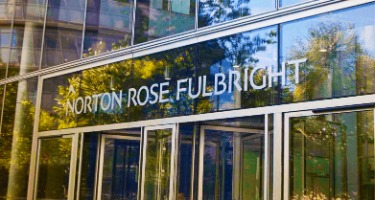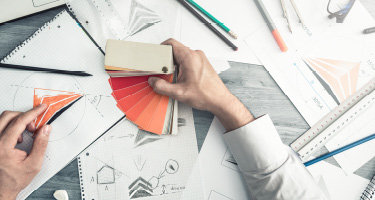With the development of “skyscrapers” in the late 1800s, building fires became a serious threat for those living and working in high-rise and multi-story buildings. At that time, fire escape technology generally focused on individual escape and the availability of on-site equipment. Imagine parachutes and other “flying devices” for leaping from windows, and chutes and pulley systems extending between the ground and upper floor windows.
None of the previous inventions of the time could compare to that of Anna Connelly, a female inventor, who brought a new perspective to fire escape innovation. Anna’s invention, which was patented in 1887 and titled “Fire Escape”, is the exterior staircase that we all have seen affixed to buildings. It includes platforms and railings to prevent people from falling in the panic of an emergency. Anna’s design allowed you to stay with a group and help others, provided two-way access for firefighters to assist and was retrofittable to buildings without requiring costly interior remodels.
Anna was one of the first women inventors to submit an idea to the U.S. Patent Office, decades before women even had the right to vote or to own property in many states. Even with these limitations, Anna’s invention was so remarkable at the time that it led to a change in building codes. Anna shifted the burden from the building occupants who had been responsible for their own escape to the building owners who were then required to provide a second means for egress for building occupants.
Not much is known about Anna Connelly except for what is written in her patent. However, it is well known that people tend to invent around the problems that directly affect their lives. With the assumption that Anna likely focused her efforts on an invention that affected her personally, we can put some pieces together. As a woman living during this time, Anna likely did not work in a high-rise building. Instead, Anna may have lived in an apartment building, or she may have experienced the trauma of witnessing a building fire and the people stuck in it. As a woman of this era, Anna also likely had caretaking responsibilities, whether for children or other family members, and the idea of leaving children behind likely would not have been an option for her. Using her life perspective, Anna was able to find a way out of the fire for the most vulnerable of our society, thereby improving the fire escape scenario for all.
There is much to learn from Anna Connelly and her willingness to step forward with her invention to better our world. Bringing her unique perspective, Anna is directly responsible for saving the lives of thousands of people over a period of more than 100 years. In tribute to Anna Connelly, let’s consider what each one of us can do to change how we encourage diverse voices in innovation for more inclusiveness in our technological developments and our progress as a society.
The STEM Problem
We all know we have a STEM problem: not enough women and minorities entering the fields of science, technology, engineering and math. Not only does this STEM problem affect an individual who might have potential in a STEM career, but it also affects us as a society. Without diversity at the invention table, we end up with blind spots in our innovations. One such blind spot is in seatbelt technology.
Although automobiles built in the past decade are much safer than earlier models, women are still more likely to be seriously injured in car crashes than men. Why is this? Seatbelts—historically designed by predominantly male automotive industry engineers—were designed using the average male body as the model for the crash test dummy, which did not account for size and anatomical differences in females.
Another blind spot is in facial recognition software. This technology is most accurate for white males (who make up the majority of software engineers in the U.S.), and least accurate for women of color with error rates of up to 35%. In both the seatbelt and facial recognition software industries, empowered diverse voices at the invention table, involved in the development and testing of the ideas early on, could have helped to reduce these error rates.
If we look at the data today, it is surprisingly difficult to quantify diversity in innovation. The World Intellectual Property Organization (WIPO) has created a gender-name dictionary, which matches common names with male or female gender on patent applications. As you can imagine, this data is not perfect, but it does provide some rough numbers. What we have learned through the WIPO data is that women, as roughly 50% of the global population, account for about 13% of inventors in patent applications globally. Yes, that’s one female for every seven males.
Although the data and examples are based on a lack of gender diversity in the innovation process, diversity means much more than gender. For innovation to be inclusive, it must be viewed from a range of different perspectives, for example: social and economic diversity, racial and ethnic diversity, gender diversity with a recognition that gender is not binary, sexual orientation, diversity in abilities and many others.
Improving Diversity in Innovation
Together as a group, we can work toward a goal of inclusive innovation. First, we can get involved at any point in the STEM pipeline—as early as elementary school, continuing through graduate school, even with our researchers—either to make the STEM pipeline larger or to fix what is called the “leaky pipeline.” The leaky pipeline is the phenomenon in which women and minorities drop out of their STEM careers when they get to the advanced PhD and researcher stages—where they would most likely be bringing forward innovations to the marketplace. Fixing the leaking pipeline means we need to make it easier for women and minorities to stay in STEM fields, with flexible work plans and inclusive workplaces, and removing other barriers such as harassment and other workplace challenges that lead women and minorities to leave the field.
On the topic of inclusive workplaces, the data shows that women and minorities innovate more when they are on teams. We can examine our innovation teams and put effort into creating diverse teams. We can also acknowledge that diverse teams may not be as efficient at the start because, in their diversity, the teams are not as comfortable for everyone. It is by the very nature of this discomfort that these teams think about different viewpoints and produce better results, leading to stronger innovations.
Second, we can move away from celebrating perfection and start celebrating risk-taking, experimentation and failure. Invention takes courage. There can be peer-rejection, market-rejection and straight-up invention failure. In the best of circumstances, it can be daunting to consider failure as an option. As a minority, inventing can be overwhelmingly daunting without the right environment, one that encourages ideation and embraces the process. To support these minority inventors, it can be simple. Try these simple statements, “This is an important idea” or “We learned a lot from this failure.” Creating an environment that proactively supports the process, rather than just the perfect result, can open the opportunity for inclusive innovation.
We are in a global economy and our world is facing big problems. We need new innovations that work for everyone. Building diverse teams and encouraging diversity in innovation is a big step forward in tackling our collective problem and escaping the fire.
Emily C. Peyser is a shareholder in the Patent Prosecution practice group at Polsinelli PC. Emily partners with clients to offer strategic and comprehensive intellectual property strategies to help build, monetize, and protect their IP portfolios. Emily is also a co-lead of Polsinelli’s Women-in-IP Committee together with colleagues Angel Lezak and Tara Nealey.




























